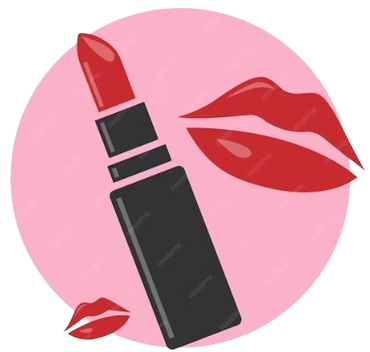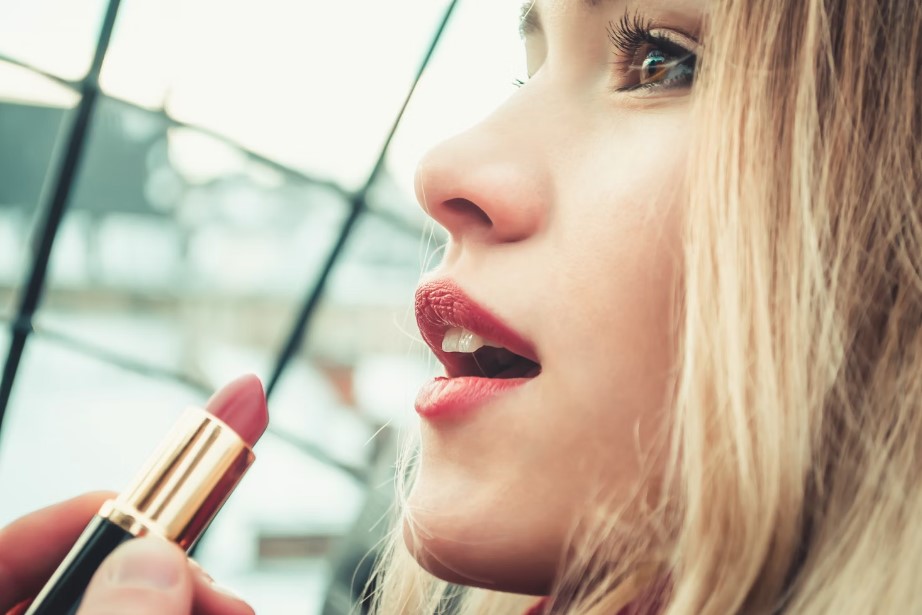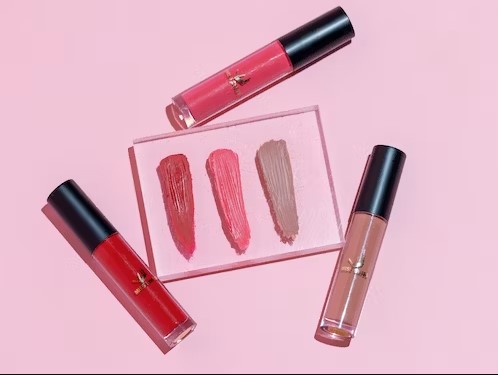The Remarkable Past of Lipstick
Lipstick laws have been influenced by safety concerns, religion, gender, class, and other reasons since antiquity.
The earliest lipstick ever discovered was made in 3500 BCE, and Queen Schub-ad of prehistoric Ur wore it. The lip pigment, a combination of “white lead and crushed red rocks,” was so popular that people would be buried with cockleshells full of it; nonetheless, as Schaffer points out, “Historically, one was relatively less likely to die from lipstick than from most other cosmetics products.”
All genders in Egypt used makeup on a daily basis; the vivid color comes from red ochre, “either applied alone or mixed with resin or gum for more lasting finish.” Orange, magenta, and blue-black were also common hues, and, as in Ur, the wealthy were buried with at least two sets of makeup lip color pots.
Women” if they didn’t wear makeup or lip paint when they went out in public Ancient Greece had a very distinct atmosphere. Lip paint’s social standing changed in response to a protest against the “rampant reliance on lipstick’s artificial beauty”; under the Greek Empire, lip paint was mostly worn by sex workers. The color red was still popular, made with wine, dyes, and “extraordinary ingredients as sheep sweat, human saliva, and crocodile excrement.”
This change in popularity also brought about the first rules for the cosmetic, but not for the reasons you might expect considering the contents. Lip paint’s “potential deception of men and the undermining of class divides” prompted lawmakers to enact new legislation, which said that prostitutes who appeared in public without lip paint and other makeup “could be punished for improperly posing as ladies.”
Lipstick once more gained popularity with the fall of the Roman Empire. Rich women wore it for fashion, and men used it to show their social status. But there was a cost to prestige and beauty. Ochre, iron ore, and fucus plants were the components that “infused lip paint with a potentially deadly poison.”
A “gradual but distinct shift in favor of a rather plainer, and possibly slightly less washed existence” was observed in Western Europe throughout the Early Middle Ages (c. 500–1000 CE), and by the High Middle Ages (c. 1000–1300 CE), religion had eliminated lipstick from the list of necessities. Women who used makeup were thought to have made a deal with the devil in England, according to Schaffer, “because such alteration of her given face challenged God and his workmanship.”
In the eighteenth century, England enacted laws prohibiting even more cosmetics. Wigs, artificial teeth, and high-heeled shoes were among the items that changed a woman’s appearance, and doing so may result in her marriage being dissolved or her being prosecuted for witchcraft. According to Schaffer, this rule also benefited men, but it had an unexpected effect on women. It made fewer women purchase lipstick, which at the time frequently contained vermilion that was contaminated with mercury. Many ladies were probably spared from food illness by the limitation.
Lipstick became a dirty little secret or a look that ladies attempted to obtain covertly as a result of prohibition. During the Victorian era, women resorted to lip biting, rubbing red ribbons on their lips, and exchanging lipstick recipes “with their friends in underground lip rouge societies” due to the Queen’s public declaration that makeup was “impolite.” However, for acquiescent women, trips to Paris were a discreet but appropriate solution, as Guerlain’s grapefruit, butter, and wax lip pomade was available.
More and more women started using lipstick “as an emblem of women’s emancipation” in 20th-century America, when color started to appear on their lips. Safety was still a concern, though. The “common American recipe of crushed insects, beeswax, and olive oil produced lipstick with an unfortunate tendency to turn rancid several hours after application,” as Schaffer puts it. Safety standards weren’t introduced until 1938, when the US passed the Food, Drug, and Cosmetics Act, prohibiting the use of “poisonous” or “deleterious” ingredients in cosmetics. More legislation, mostly at the state level, would enact even stricter safety standards for cosmetics in the ensuing decades.
Unexpectedly, lipstick is a politically charged product. It has been used for a long time, dating back to the ancient societies. It was also popular during the punk-rock music and cultural movement of the 1970s, when it was “adopted by both sexes to express sex, violence and general nonconformity.” More recently, it has been discussed in relation to the use of animal testing in consumer safety. However, as Schaffer notes, it is far more frequent than most people think for lipstick to go drastically out of style because of its tendency to move “from the heights of popularity to the depths of social unacceptability.”

There is a lipstick tint to satisfy everyone’s needs, ranging from the traditional red to the most extreme lime green. From face paint for hunters to a cosmetic, lipstick has evolved into a commonplace component in the cosmetics cabinet and one of the most widely purchased makeup products. Many people view wearing lipstick as a means to represent becoming a young adult and making the journey into maturity. Even though millions of people use lipstick every day, the majority are unaware of its history or significance.
The original lipstick recipes were frequently extremely basic and comprised only readily available ingredients. These paints, which are very different from modern lipsticks, were once widely used by both men and women. Rather than being administered with a portable, compacted tube, they were frequently fine powders with dyes mixed into them in a bowl and applied with a brush. Earlier formulae had a viscosity more akin to water than the solid, blendable formulas that are now widely used.
The History of Lipstick: Dazzling in Red Like Cleopatra The oldest documented instances of lipstick manufacture date from Mesopotamia, where ladies used finely ground precious stones to dust as lip decorations. This was the first production that didn’t use easily accessible natural materials. Beginning in Mesopotamia about 2500 BC, the procedure quickly expanded, transforming the way people made the once simple face paints into more opulent versions. Around 2000 BC, when the practice arrived in Egypt, various aristocrats and clergy started experimenting with different ingredients—many of which were poisonous—to make a variety of lipsticks. It was in Egypt that the traditional shade of red gained popularity. Red lip paint was reserved for powerful and distinguished women, one of the most prominent examples being the Nile’s Cleopatra.
Lipstick: A Stunning Stick
A man by the name of Abu al-Qasim al-Zahrawi invented the product that is most comparable to lipsticks today between the years 8 and 12 AD. He made the first solid lipstick ever by rolling scent sticks into unique molds. It proved that there were more effective ways to make lipsticks more portable, and it took the globe by storm. But as far as the ingredients go, it was in 1884 that a French cosmetics business by the name of Guerlain began producing what would eventually be referred to as commercial lipstick. They created a lipstick that was packaged in elegant silk paper and contained castor oil, beeswax, and tallow from deer. Ultimately, the first lipstick swivel tube was invented in 1923. by Levy Maurice. Because of its mobility and ease of use, this design quickly gained popularity. Cosmetic businesses have used their artistic license to modify the basic packaging over the years, either by changing the colors or the tube’s “bullet” shape to more fascinating shapes.
Historical Scandalous Lipsticks
It’s interesting to note that lipstick wasn’t always as popular as it is now. You might be surprised to learn that lipstick was once deemed criminal. Around the sixteenth century, in the midst of Europe’s dark ages, the Christian Church decided to outlaw lipstick. They considered lip coloring to be a ceremony connected to paganism. As a result, only the lowest classes in Europe at this time—primarily prostitutes—wore lipsticks. The English Parliament once even approved a rule mandating that anyone found wearing lipstick would be set ablaze on the grounds that they were witches. Not until Queen Elizabeth I did people start to have thoughts on lipstick shift. She ignored the church and, like Cleopatra, wore a vivid crimson lip to contrast with the pallid cosmetics on her white face. Furthermore, the stigma against lipstick in churches was reversed since it would be very frowned upon to burn the Queen of England.
As a Social Status, Lipstick
In this instance, the customary social trend was reversed, making the crimson lip a symbol of exclusivity for the wealthiest social classes. But the cultural perception of lipstick has been nothing less than a rollercoaster, with its popularity fluctuating between huge and low. Lipstick first became popular again in 1884, and its trend has since continued to rise. Lipstick hues were frequently employed to indicate class differences. For instance, purples were typically connected with lower classes, but reds were typically associated with higher grades. Men have also historically worn lipsticks; in ancient Rome, this was a rather common fashion. The idea that lipstick is only appropriate for women has really taken off.
As a Social Status, Lipstick
In this instance, the customary social trend was reversed, making the crimson lip a symbol of exclusivity for the wealthiest social classes. But the cultural perception of lipstick has been nothing less than a rollercoaster, with its popularity fluctuating between huge and low. Lipstick first became popular again in 1884, and its trend has since continued to rise. Lipstick hues were frequently employed to indicate class differences. For instance, purples were typically connected with lower classes, but reds were typically associated with higher grades. Men have also historically worn lipsticks; in ancient Rome, this was a rather common fashion. The idea that lipstick is only appropriate for women has really taken off. When lipstick was once again legalized in the 1890s, a lot of advertisements showing women appeared.
What Did They Put in the Lipstick?
Not all lipsticks were made of the best or most edible ingredients. Many people who used lipsticks in the early stages had the risk of swallowing poisonous substances and passing away as a result. In ancient Egypt, bromine mannite and iodide, two poisonous metals that combined to produce a stunning purple tint, were frequently used as ingredients in lipstick. These lipsticks were frequently dubbed the “Kiss of Death” because so many people who wore them got sick or, more frequently, passed away. Fish scales were another, less frequent component used to make lipstick in Egypt. Fish scales were a favorite method of Cleopatra’s for getting the ideal crimson color without any negative side effects. It was in the 16th century that lipsticks first appeared were made using more commercial items like colors and beeswax that we use today. But there were still some lipsticks on the market that contained dangerous chemicals. During the 1850s, lead and vermillion, two highly deadly substances, were commonly used in lipstick formulations. In an effort to reduce the number of hazardous chemicals in lipsticks, better quality regulations were implemented in the 1900s.
As toxicity concerns subsided, attention shifted to formulae for lipstick improvement. Making lipstick long-lasting and portable was the primary goal. But trying to come up with the ideal recipe that was smear proof and long-lasting is easier said than done. French scientist Paul Baudercroux made the first significant attempt at this in the 1920s. Rouge Baiser, the lipstick he created, was meant to be “Kiss-proof.” But because he created it too well, his invention was outlawed because users could not remove it from their lips without risking severe harm. There have been several attempts to make smear-proof lipsticks, but Hazel Bishop made the first real, long-wearing lipstick that doesn’t smear. By 1920, more formula modifications had yielded the first lip gloss.
Shades of Lipstick Throughout History
As longer-lasting lipsticks became available, more color options also became available. Since they were the simplest to make, red and purple lipstick were the most common tints in the beginning. The range of hues available for lipsticks expanded throughout the 1950s. There was no shortage of colors; pinks, whites, and even black were easily found. Since every prominent celebrity, including Marilyn Monroe and Elizabeth Taylor, wore an intense red lip, red remained the color of choice. But other hues, like black and white, started to become more fashionable. Goths favored midnight black lipstick, while groups like the Ronettes wore brilliant white lips. Though there are a lot of new color options available, most women favored darker tones.
in comparison to lighter ones. These days, lipsticks are available in any color imaginable and can be used for any purpose. Many women would rather base their color choice on personal taste or the current season’s fashion.
Numerous businesses took advantage of the expansion of the cosmetics market to incorporate lipstick by developing distinctive formulas in an array of hues. Lip Smackers, the first company to release flavored lipsticks, is one of the most famous lipstick lines ever made. As a result, adding flavorings or scents to formulae started a whole new trend. One of the most well-known lipstick brands today, Bite Beauty, has developed a range of lipsticks that are actually edible in addition to being fully customisable in terms of flavor and color. Color-changing lipstick is another lipstick fad that has gained popularity in 2016. In late 2015 or early 2016, a line of cosmetics was developed using a formula that are green, but they turn pink when applied to the skin. This was a significant improvement over the early 1900s formulations.
Using Lipstick: Going Natural, Going Wild
Applying lipstick has more uses than only making one seem attractive. The modern customer demands a lipstick that is not only fashionable but also comfortable, has a lengthy wear time, and—above all—nourishes the lip itself. Knowledgeable people want formulations that include vitamins, moisturizers, and only natural components. Lipstick is considerably more than just an absurd cosmetic. People can express themselves freely and change their appearances to suit their moods thanks to lipsticks, which are a non-permanent cosmetic. Even with the advancements in formulae, which now include edible lipsticks and lipsticks that drastically change color when applied, the product’s symbolic meaning of freedom endures fashion and private medical care.



